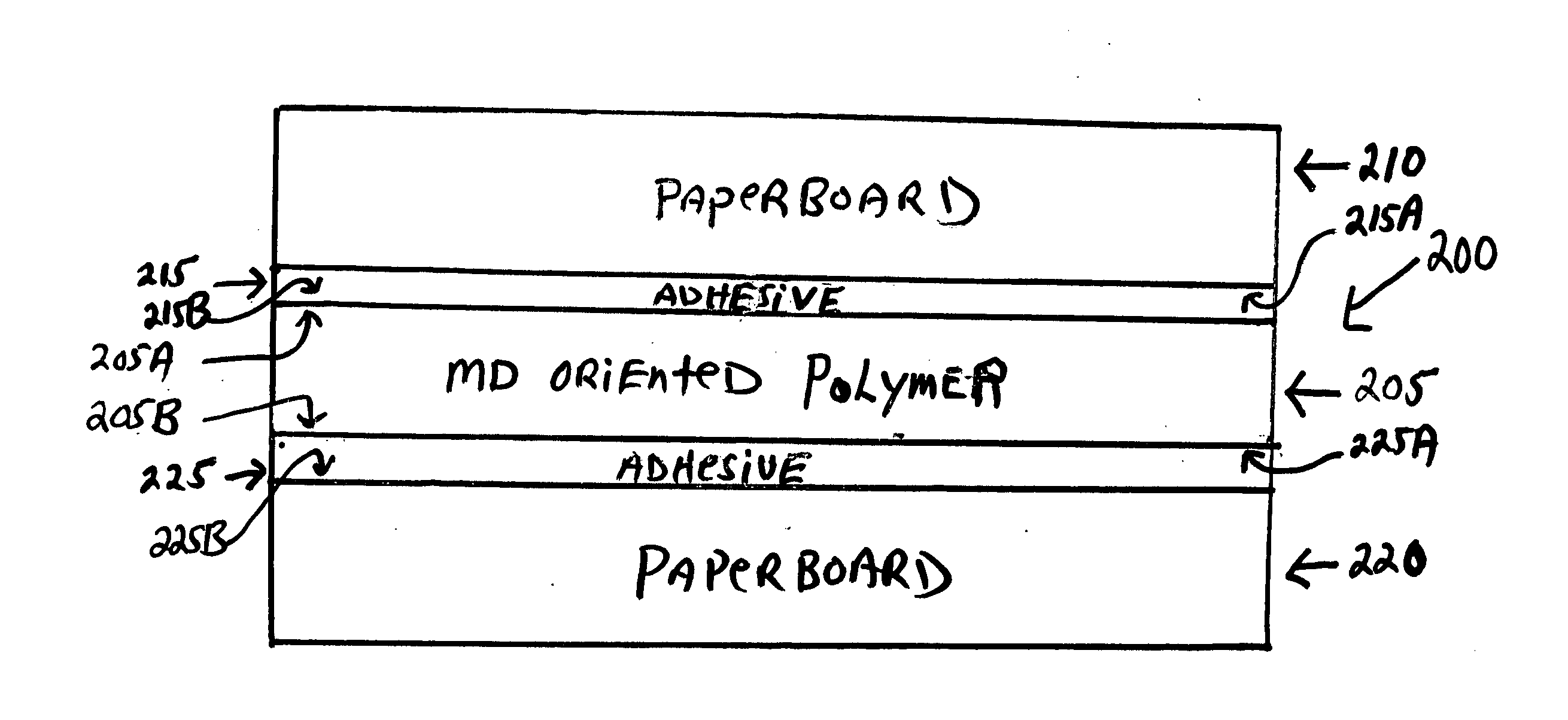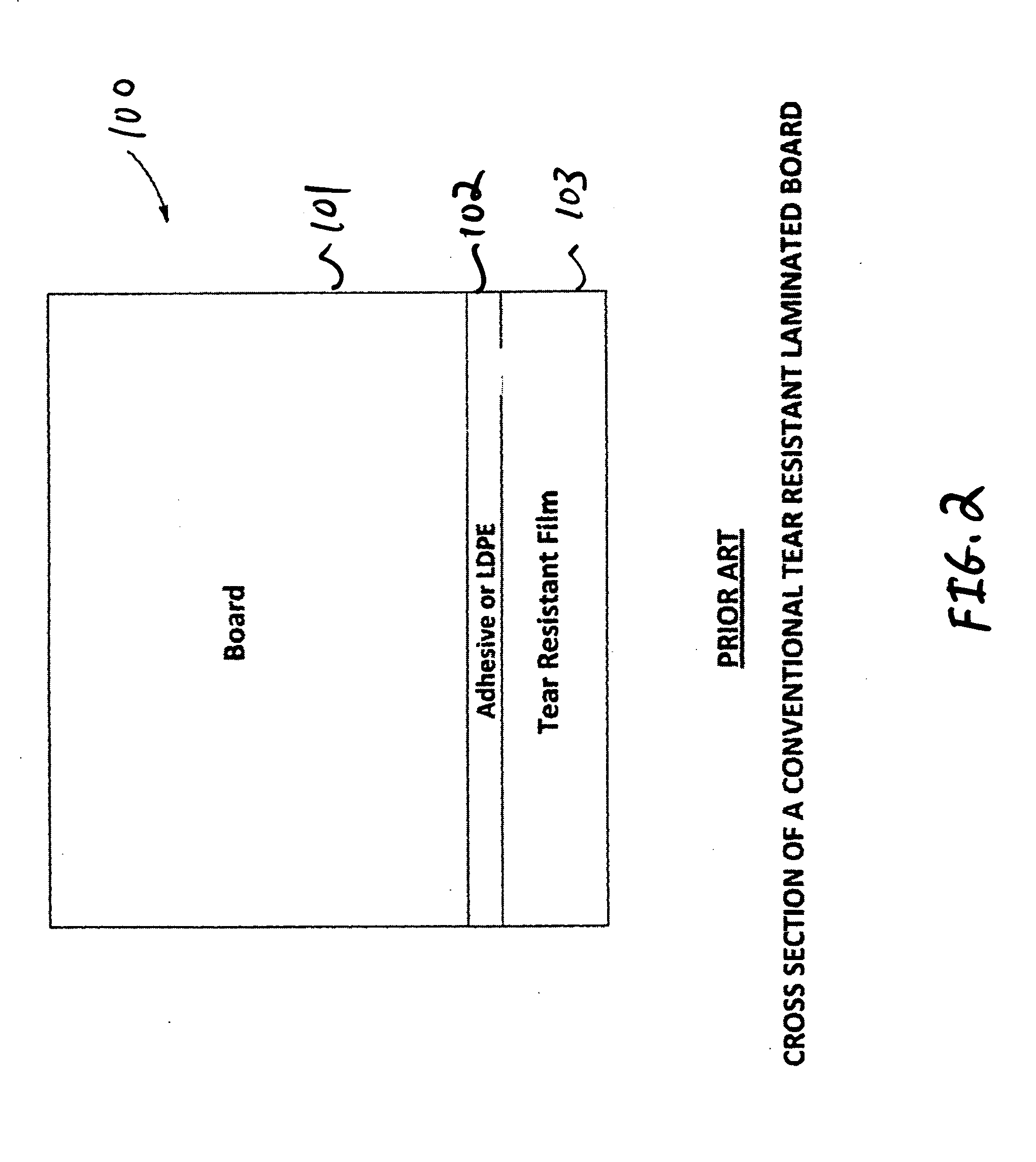Tear resistant paperboard structure and method
a technology of laminate sheets and structures, applied in the field of laminate sheets, can solve the problems of low tear resistance and burst resistance, unsatisfactory texture, and undesirable texture, and achieve the effects of improving the dimensional stability, reducing the amount of material, and improving the packaging structur
- Summary
- Abstract
- Description
- Claims
- Application Information
AI Technical Summary
Benefits of technology
Problems solved by technology
Method used
Image
Examples
Embodiment Construction
[0035]In the following description, the same numerical references refer to similar elements. The embodiments, geometrical configurations, materials mentioned and / or dimensions shown in the figures or described in the present description are preferred embodiments only, given for exemplification purposes only.
[0036]In the context of the present invention, any equivalent expression and / or compound words thereof known in the art will be used interchangeably, as apparent to a person skilled in the art. Furthermore, although the preferred embodiment of the present invention as illustrated in the accompanying drawings comprises components such as clay coatings, liquid adhesive, extrusion laminate concentrations, etc., and although the preferred embodiment of the tear-resistant paperboard laminate and corresponding parts thereof consists of certain geometrical configurations as explained and illustrated herein, not all of these components and geometries are essential to the invention, unles...
PUM
| Property | Measurement | Unit |
|---|---|---|
| thickness | aaaaa | aaaaa |
| thickness | aaaaa | aaaaa |
| tensile strength | aaaaa | aaaaa |
Abstract
Description
Claims
Application Information
 Login to View More
Login to View More - R&D
- Intellectual Property
- Life Sciences
- Materials
- Tech Scout
- Unparalleled Data Quality
- Higher Quality Content
- 60% Fewer Hallucinations
Browse by: Latest US Patents, China's latest patents, Technical Efficacy Thesaurus, Application Domain, Technology Topic, Popular Technical Reports.
© 2025 PatSnap. All rights reserved.Legal|Privacy policy|Modern Slavery Act Transparency Statement|Sitemap|About US| Contact US: help@patsnap.com



